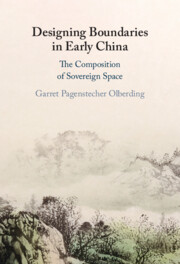Book contents
- Designing Boundaries in Early China
- Designing Boundaries in Early China
- Copyright page
- Dedication
- Contents
- Maps
- Acknowledgments
- Chronology
- Preamble
- 1 The Basis of Ancient Borders
- 2 The Visual Modeling of Space in Text and Map
- 3 Movement and Geography
- 4 The Perception of the “State”: The Internal Definition of Sovereign Space
- 5 The Perception of the “Enemy”: The External Definition of Sovereign Space
- 6 Transgressions: Rupturing the Boundaries Between Sovereignties
- Conclusion
- Bibliography
- Index
Preamble
Published online by Cambridge University Press: 19 November 2021
- Designing Boundaries in Early China
- Designing Boundaries in Early China
- Copyright page
- Dedication
- Contents
- Maps
- Acknowledgments
- Chronology
- Preamble
- 1 The Basis of Ancient Borders
- 2 The Visual Modeling of Space in Text and Map
- 3 Movement and Geography
- 4 The Perception of the “State”: The Internal Definition of Sovereign Space
- 5 The Perception of the “Enemy”: The External Definition of Sovereign Space
- 6 Transgressions: Rupturing the Boundaries Between Sovereignties
- Conclusion
- Bibliography
- Index
Summary
In this work, I explore the complexities attached to interpreting the geographically mapped visual in early China, particularly with how geographical representations of space originated, what purposes they might have served, and what symbolic meanings they may have contained and communicated. Visually representing space is a way of understanding it, but the meanings of visual geographic representations – whether maps or landscape paintings – are not obvious. Perhaps because of the modern state’s emphasis on precise borders, with a correspondingly precise exercise of privileges and sanctions, there is a retrogressive application of this sensibility onto premodern civilizations, which, as James C. Scott has discussed in his Seeing Like a State: How Certain Schemes to Improve the Human Condition Have Failed, had no such precise notions.
Information
- Type
- Chapter
- Information
- Designing Boundaries in Early China , pp. 1 - 3Publisher: Cambridge University PressPrint publication year: 2021
